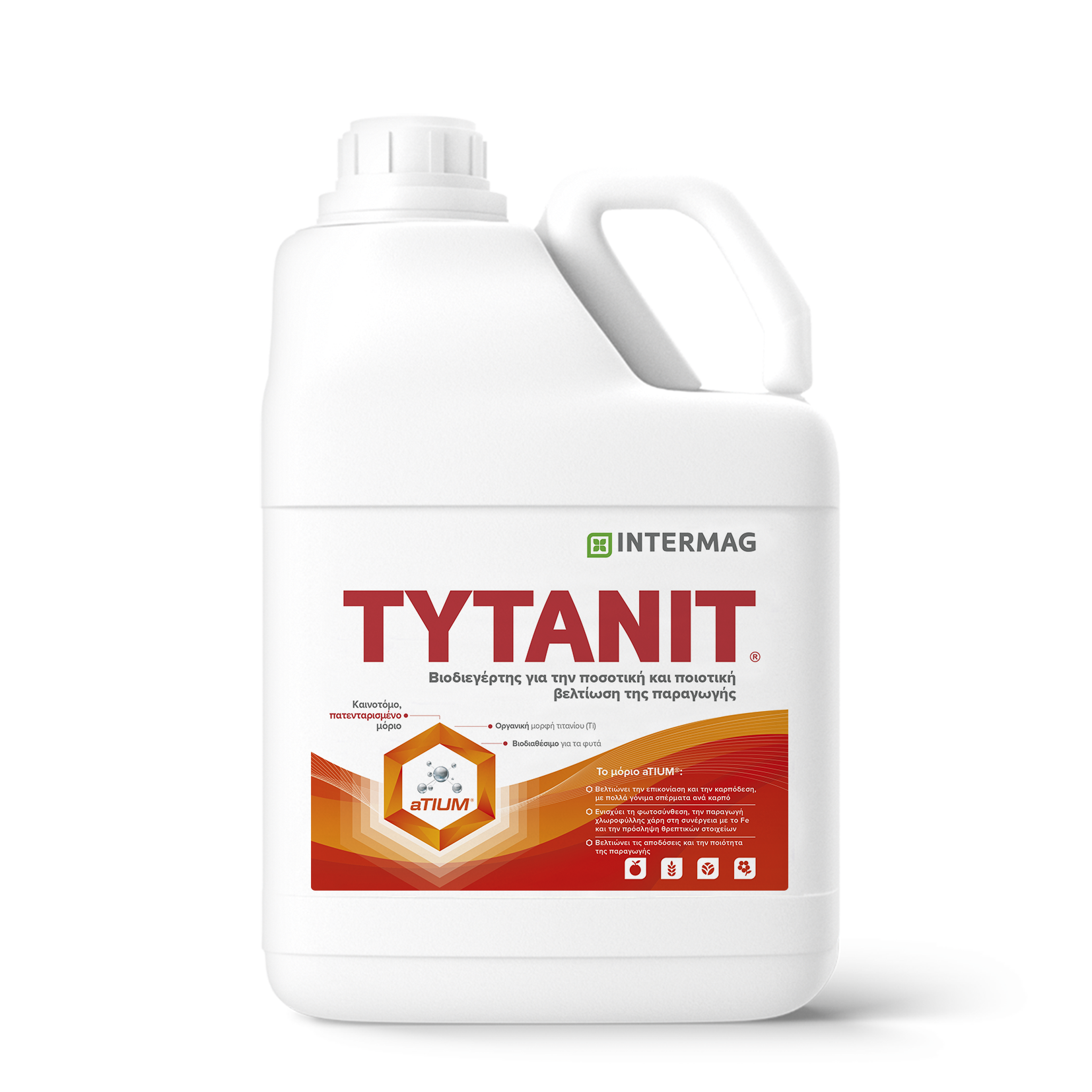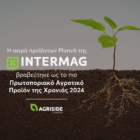Dr. Stylianos Katerinis
Director of the Technical Department
of Agriside Crop Care
Titanium is a recently studied beneficial element for agriculture.
It acts synergistically with iron in chlorophyll production and photosynthesis, activates enzymes, and enhances the functionality and development of leaves and vascular tissues. In this way, it improves the absorption of nutrients from the soil, especially potassium.
It increases calcium mobility within the plant and promotes abundant fruit set with many fertile seeds in multi-seeded fruits, leading to high yield and quality.
Tytanit®, thanks to aTIUM® technology, provides plants with immediately bioavailable titanium. It is marketed in Greece as a plant biostimulant with CE certification [ΚΛΠ 6(Β)], in accordance with Regulation 2019/1009/EU.
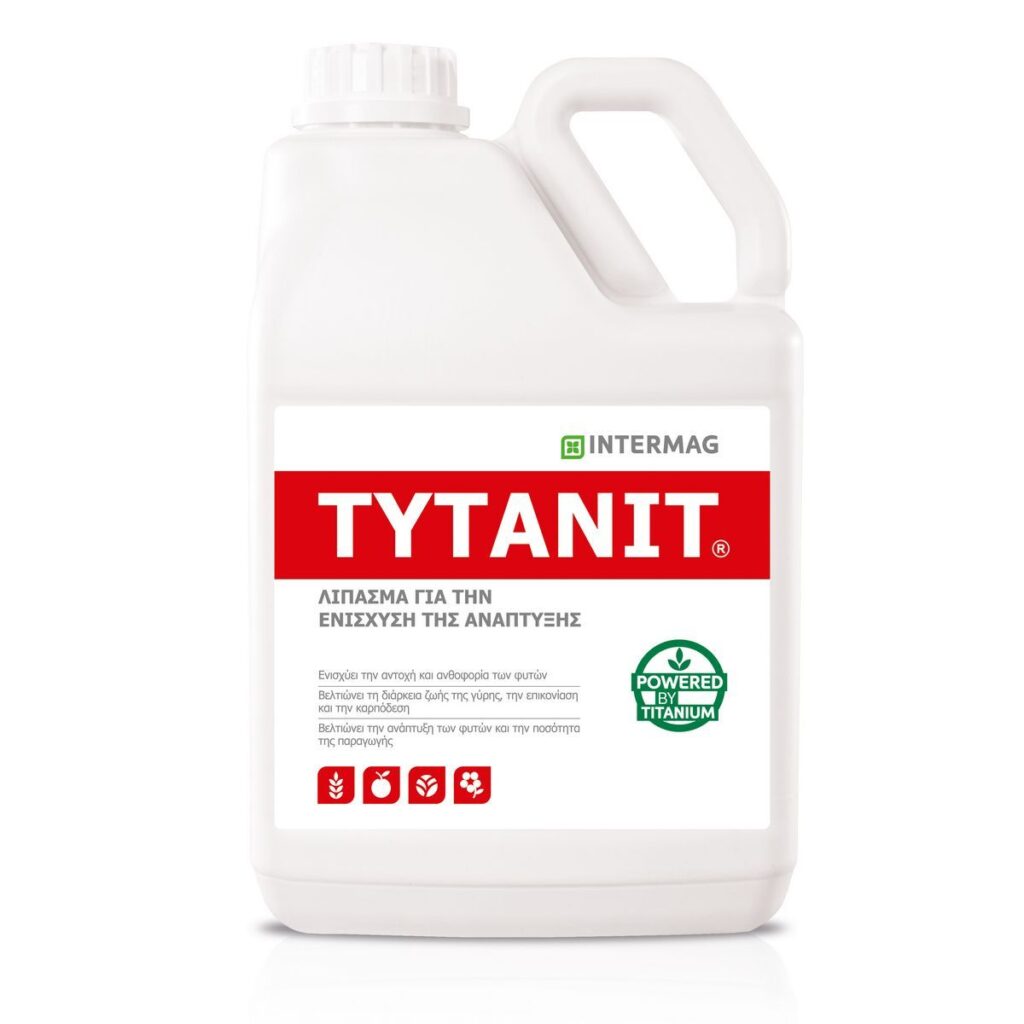
Titanium (Ti) is a low-density metal and the ninth most abundant element on Earth. It forms light and durable alloys with other metals, which find applications in industry. Its dioxide (TiO₂) is used in chemical products and, in small concentrations, in food as an additive (E171). Traces are also detected in the human body. In nature, most plants cannot absorb it. However, when supplied in low concentrations, it acts as an inorganic biostimulant for plants, offering multiple benefits for their growth.
The beneficial action of Ti in plants
A large number of studies conducted over the past 50 years on a wide range of cultivated plant species have documented the multidimensional biostimulant role of titanium in nutrition, growth, biomass accumulation, productivity, and crop quality. Many researchers report that the exogenous application of Ti led to an increase in plant resistance and productivity by 5% to as much as 30% across many cultivated species. In addition, improvements in Nitrogen Use Efficiency (NUE) by plants have also been documented.
Modes of action of Ti in plants
The mechanisms of Ti action within the plant are mainly based on:
a) its synergistic interaction with iron (Fe),
b) its contribution to the activation of enzymes and the improved utilization of the elements: iron (Fe), magnesium (Mg), and nitrogen (N),
c) the enhancement of calcium (Ca) and potassium (K) mobility, facilitating their absorption, transport, and distribution within plant tissues.
The stimulation of enzymatic activity caused by titanium (Ti) is mainly associated with enzymes whose function depends on iron (Fe), either directly (peroxidase, catalase) or indirectly (nitrate reductase). At the same time, the synthesis of photosynthetic pigments is also Fe-dependent. After Ti application, an increase in Fe²⁺ concentration is observed in plant cells, which is linked to the promotion of ferritin synthesis, thereby contributing to improved storage and utilization of Fe (Fe homeostasis) by plants.
More effective utilization of Fe, Mg, and N leads to increased chlorophyll content, intensified photosynthesis, and an increase in the size and functionality of leaves and vascular tissues, resulting in improved nutrient uptake—especially of potassium (K).
In addition, Ti enhances the translocation of nutrients within plants, particularly calcium (Ca), which leads to an increase in stigmatic exudate (sticky substance) on the flower stigma, thereby improving fertilization and fruit quality.
Ultimately, this results in improved plant growth, vigor, and resilience, as well as higher yield and better production quality.
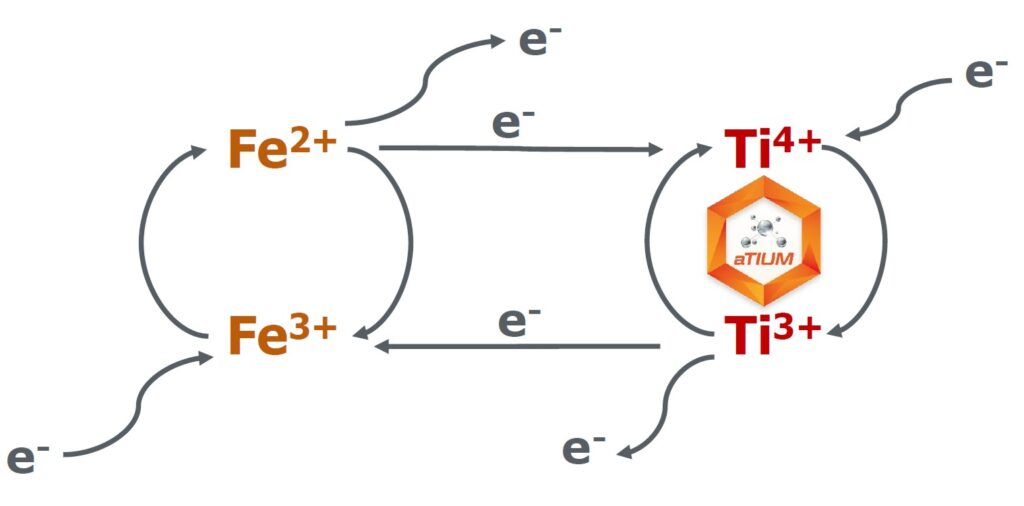
More specifically, Ti, when applied foliarly at low concentrations, has been experimentally shown to:
- Promote chlorophyll biosynthesis and photosynthesis:
- Ti enhances chlorophyll biosynthesis and photosynthesis, mainly through its synergistic action with iron (Fe). Specifically, Ti intervenes in the redox process, acting as a redox catalyst, and boosts electron transfer from Photosystem I to Photosystem II. It participates in the Ti⁴⁺/Ti³⁺ and Fe³⁺/Fe²⁺ cycles. For example, when iron increases its valence from Fe²⁺ to Fe³⁺, Ti reduces from Ti⁴⁺ to Ti³⁺ and vice versa, thereby ensuring balance. This equilibrium contributes to better utilization of Fe and enhances the green coloration of leaves.
- Stimulate the activity of several enzymes:
- Ti activates important enzymes such as catalase, peroxidase, lipoxygenase, phosphofructokinase, nitrate reductase, etc., thus stimulating metabolism, including nitrate metabolism. Plants with sufficient nitrogen respond positively to Ti application, while legumes show improved nitrogen-fixation efficiency.
- Improve the size and functionality of leaves and vascular tissues and, consequently, nutrient uptake by the roots:
- Uptake of N, K, P, Ca, Mg, Fe, Zn & Mn is enhanced, as well as their mobility within the plant—particularly Ca and K. Increased nitrate absorption is also a result of more intensive photosynthesis (nitrate photoassimilation, nitrate transporter gene expression). Since metabolism is simultaneously more intensive, absorption of other nutrients (K, P, Mg, Ca) is also facilitated.
- Improve flower fertilization and fruit set, with more fertile seeds in multi-seeded fruits:
- This allows seeds to be better nourished by the plant. Thanks to improved Ca mobility, more Ca is translocated to the stigma, increasing the amount and fluidity of the stigmatic exudate. As a result, more pollen grains adhere for longer. This leads to the development of more pollen tubes, and with sufficient boron (B), more effective fertilization occurs, producing a higher number of fertile ovules. This results in better quality, size, and weight of fruits, especially in multi-seeded ones.
- Increase fruit vitamin C content, improving their nutritional value.
- Enhance pigment content:
- Ti promotes the synthesis of natural pigments such as anthocyanins, β-carotene, and xanthophylls, thereby improving fruit color and gloss.
- Improve fruit nutrition, weight, size, and firmness, thanks to the combination of good fruit set (number of fertile seeds) and efficient nutrient uptake and mobility, including Ca.
- Increase biomass and yield:
- The stimulation of chlorophyll biosynthesis, enhanced photosynthesis, enzymatic activity, and nutrient absorption lead to significant increases in plant biomass and productivity.
- Strengthen plant tolerance to abiotic stresses, mainly due to enzyme activation.
- Enhance seed germination and seedling development after seed soaking in Ti solution.
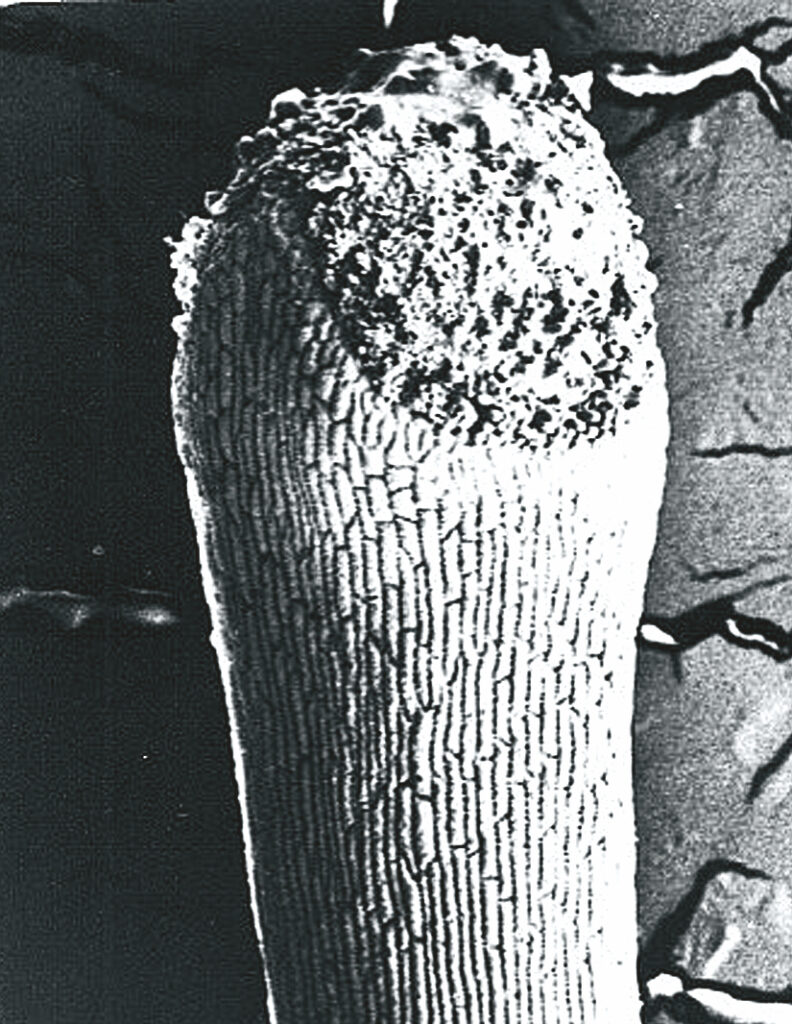
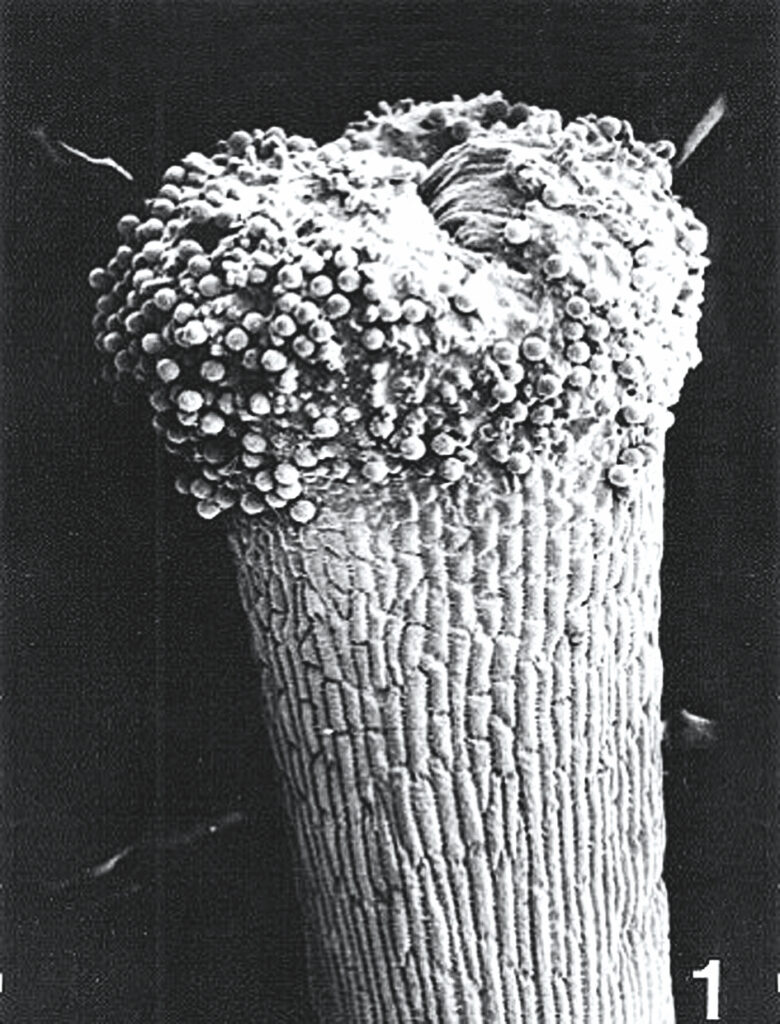
Experimental data on Titanium
Experimental studies since 1974 have shown that foliar application of Titanium:
- Resulted in 39% and 35.7% increase of Fe content in peach peel and flesh (2004), as well as an increase in Fe concentration in pepper leaves (1995).
- Increased chlorophyll a and b concentration and total chlorophyll in bean (1983), wheat (2014), and other plant species.
- Improved photosynthesis efficiency and growth in spinach (2007).
- Enhanced nutrient uptake (K, N, P, Ca, Mg, Fe, Zn, Mn), vitamin C and lycopene content, fruit quality, and total yield in greenhouse tomato (2013 & 2014), and vitamin C in pepper fruits (1993).
- Increased β-carotene and xanthophyll concentrations and capsanthin content 1.4-fold in hot red pepper (1997).
- Increased vitamin C content and anthocyanin concentration in strawberry fruits (2007).
- Stimulated nitrate reductase activity in beans (1974) and lipoxygenase and phosphofructokinase activity in tomato (1988).
- Increased the activity of superoxide dismutase and peroxidase enzymes in potato (2017).
- Improved coloration, ripening, and firmness at harvest in peaches and nectarines, while reducing weight loss during storage (2004).
- Reduced stress in wheat crops caused by heavy metals in the soil after application of 5 mg/L Ti-ascorbate solution (2002).
- Increased bean dry matter by 20% after spraying with 1 mg/L water-soluble Ti (1983), and also increased apple yield (1991).
- In pepper crops, foliar spraying with Ti solution at 2 mg/L increased biomass production (1995), while in tomato (1983) yield increased by 10.2%. Foliar application of chelated Ti solution at 1 mg/L increased peach yield by 22.1% and in cabbage by 15.7% with 2 mg/L chelated Ti.
The product TYTANIT® by INTERMAG
TYTANIT®, a liquid Ti formulation from the multinational Polish company INTERMAG sp. z o.o., is a patented plant biostimulant and the only Ti product in Greece certified with a CE mark as a plant biostimulant [ΚΛΠ 6(Β)], for improving crop performance.
It contains 0.8% w/w (8.5 g/L) titanium in the form of the patented organic molecule aTIUM®, which guarantees rapid Ti absorption within hours of application and high product efficacy. A key scientific challenge was finding a stable Ti molecule with good water solubility, rapid and efficient plant uptake, and high effectiveness. After 20 years of research, INTERMAG succeeded in creating the aTIUM® molecule at the end of the 1990s with these properties.
TYTANIT® is suitable for use on all crops, with 2–4 foliar applications during the crop cycle—from young leaf development, just before or at the onset of flowering, and in the early stages of fruit or harvestable organ development. Applications are especially beneficial under plant stress conditions.
- Recommended dose: 20–40 cc per stremma (0.1 ha).
- pH: 3.5 ± 0.4.
- Exhibits excellent miscibility and compatibility with almost all agrochemicals and microbial products.
- Fully and immediately water-soluble, rapidly absorbed by leaves, with strong biostimulant properties.
- Shows excellent stability during storage.
- According to independent studies, it is environmentally friendly, safe for bees, and non-toxic.
Experimental data on TYTANIT®
Beyond its long-standing use in many countries, both older and more recent trials in various regions have demonstrated the high effectiveness of TYTANIT® in increasing yields of numerous vegetable, fruit, and arable crops, by 9% to 29%.
Indicatively, after recommended foliar applications in relevant trials:
Strawberry yield increased by 22% (Poland).
Apple yield increased by 13% (Italy).
Tomato yield increased by 25% (Italy).
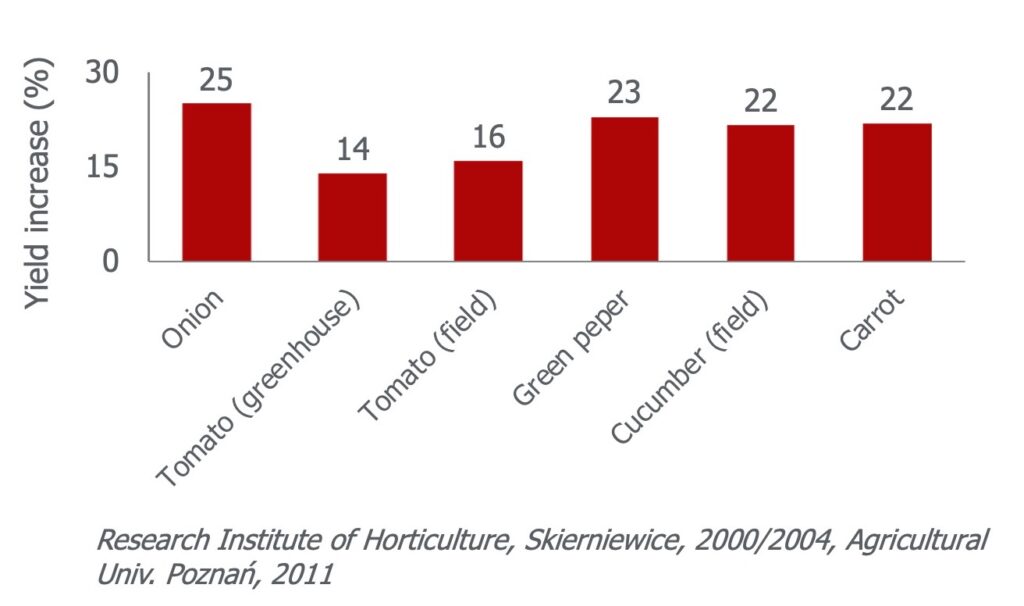
Examples of recent trials with foliar applications of Tytanit
- After two foliar applications at a dose of 0.2 L / 10 stremmata, leaf chlorophyll content and nutrient uptake increased significantly in a wheat crop (Slovak University of Agriculture in Nitra, Kováčik et al., 2014). In the same year, a corn trial by the National Institute of Plant Protection in Poland showed that three sprays of 4 L/ha at the 4-leaf, 10-leaf, and pre-tasseling stages resulted in a 10.5% yield increase, while similar applications in soybean at the 4–6 leaf stage, early flowering, and post-fruit set led to a 12.9% yield increase.
- A two-year trial (2013–2014) on Topaz apple trees in Poland (University of Agriculture in Krakow) with two pre-flowering foliar sprays at 0.2 L / 10 stremmata showed, in both years, a significant increase in the number of fertile seeds (9–10), an 18.7% increase in average fruit weight, a 5.8% increase in fruit diameter, and a notable rise in yield per tree. Trials in Italy also reported a 16% increase in average fruit weight and a 13% yield increase.
- At the University of Maribor, Slovenia (2015–2017), two spring foliar sprays on grapevines at 0.2 L/ha led to an increase in leaf area per vine of 15.1%, 20.3%, and 28.5% over three consecutive years compared to untreated controls. Yields also improved, with an average increase of 11%.
- A 2018 trial at the Polish Institute of Horticulture showed that three foliar applications at 0.2 L/ha increased the average number of tomato fruits per plant by 20.5% compared to the untreated control.
- A 2020 independent trial in Romania on winter wheat by SC Eurofins Agroscience Services SRL: two foliar sprays at BBCH stages 31 and 56 at 0.2 L / 10 stremmata resulted in a 15.6% yield increase vs. untreated control and a 10.9% increase vs. another biostimulant. Protein content also rose by 22.9% vs. untreated control and 9.75% vs. another biostimulant. Similar significant yield increases were reported in trials in Poland and Slovakia.
- A 2020 trial in Romania on sunflower with two foliar sprays at BBCH 17 and BBCH 53 at 0.2 L / 10 stremmata showed a 13.7% yield increase vs. untreated control and 8.8% vs. another biostimulant, as well as a rise in oil content by 2.2% vs. untreated control and 1.7% vs. another biostimulant.
- A 2020 potato trial in Poland with two applications at 0.2 L/ha (when plants reached 10 cm and at tuber initiation) showed a 13.9% increase in total yield and a 16.5% increase in marketable yield.
- A 2021 trial at the University of Agriculture in Krakow, Poland, on cherry trees: after three foliar applications (pre-bloom, early bloom, and post-fruit set at calyx fall) at 0.2 L/ha, there was almost a doubling of the average number of pollen grains on the stigma, a 70.8% increase in fruit set, and a 34.1% increase in average fruit weight compared to untreated controls.

